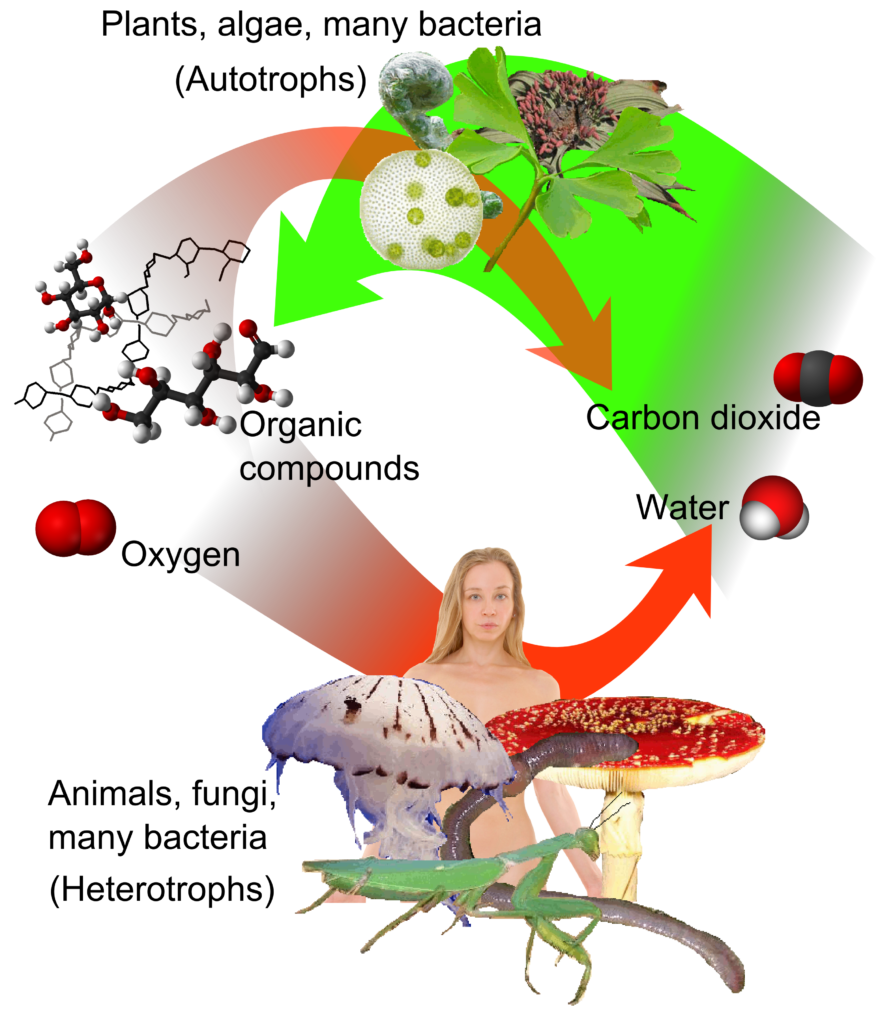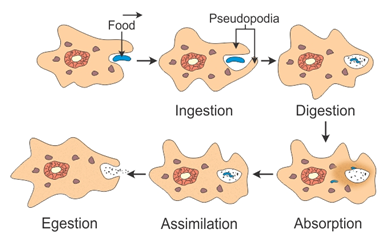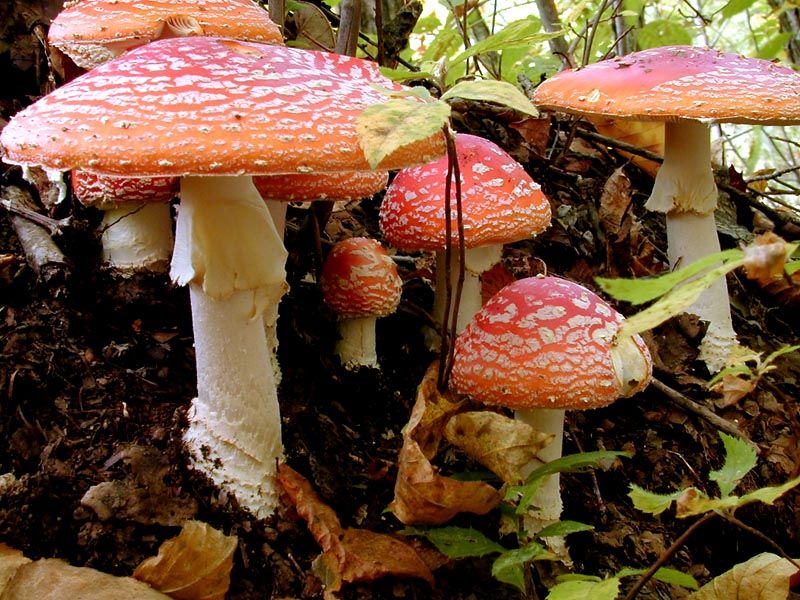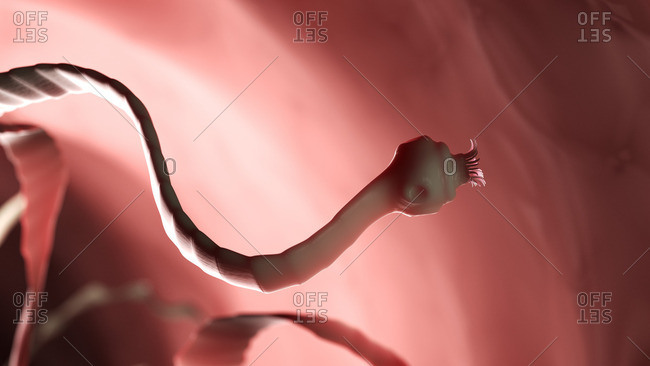Heterotrophic Nutrition

Biology’s branch of nutrition studies how people consume food, get access to it, and use other strategies to meet their needs for minerals and other nutrients. Every aspect of how living things use their energy is addressed by nutrition. Heterotrophic nutrition and Autotrophic nutrition are the two main categories of nutrition. In the autotrophic mode of nutrition, organisms prepare their food by using straightforward inorganic elements like water and carbon dioxide in the presence of sunlight and chlorophyll.
It is well known that heterotrophic nutrition refers to the mode of nutrition in which some organisms rely on other organisms to survive. Heterotrophs are organisms that cannot prepare their own food and must rely on other organisms for survival.
Examples of heterotrophs include animals, fungi, and bacteria.

The method of acquiring complex but prepared food is known as heterotrophic nutrition. The organic materials that they encounter must be acquired and consumed by heterotrophic organisms. All non-green plants and creatures are heterotrophic, meaning they eat only autotrophs. The secondary or tertiary consumers in a food chain are always heterotrophs from an ecological perspective.
Types of Heterotrophic Nutrition
The different types of heterotrophic nutrition that organisms have can be divided into the following categories:
Holozoic Nutrition:
This type of heterotrophic nutrition, also known as ingestive nutrition, involves organisms ingesting solid food. The food eaten could be a plant or another living thing. According to the food they eat, holozoic organisms can be divided into three different types. Carnivores, herbivores, and omnivores are what they are.
Saprophytic nutrition
It is a type of heterotrophic nutrition in which organisms get their food from the remains of decomposing organic materials, such as dead organisms, decomposed leaves and plant remains, excreta, food items, and more. Examples include mushrooms, mould, mycorrhizal fungi, and others.
Parasitic Nutrition
The third type of heterotrophic nutrition is parasitic nutrition, in which an organism obtains its food from another living thing. A parasite is an organism that depends on another organism for food and shelter, whereas a host is an organism that provides those things. For instance, lice and tapeworm.
Below is a detailed explanation of each of the kinds of heterotrophic modes of nutrition and the organisms that classify under each.
Holozoic Nutrition

Holozoic nutrition is the internal preparation and ingestion of both solid and liquid food by an organism. Ingestion, digestion, absorption, assimilation, and excretion are all steps in this process.
This is when consumed food is gradually broken down into smaller organic particles by the digestive process. The process of excretion removes the unimportant and ingested particles from the body after the food and useful particles have been absorbed.
All vertebrates fall under the category of holozoic-eating animals. They are not the only animals that exhibit holozoic nutrition; other examples include some unicellular organisms like the amoeba.
Holozoic Nutrition in Amoeba

The process by which holozoic nutrition occurs in amoebas, a unicellular organism, is broken down below.
The amoeba first projects its pseudopodia to encircle the food, and then it engages in phagocytosis to engulf the food.
The process of digestion follows, and this is when the food is broken down into smaller, more easily-digestible components by the amoeba food vacuoles, which are rich in digestive enzymes.
The undigested materials are then left behind as the cytoplasm absorbs the food that has already been digested. On the other hand, the food that has already been absorbed is further used to produce energy that ultimately aids in the development and growth of the cell.
The final stage of holozoic nutrition in an amoeba is the rupture of the cell membrane, which allows the excretion of the unwanted and undigested food components.
Types of Holozoic Organisms
The three following categories apply to holozoic organisms:

Herbivores – Animals classified as herbivores rely on plants for their food and nutrition. Among other animals, herbivores include deer, elephants, and cows.
Carnivores – Carnivores are animals that consume, feed on, or rely on other animals as a food source. Carnivores include creatures like tigers, wolves, and lions, among others.
Omnivores – Omnivores are animals that can eat both plants and other animals to stay alive. Pigs, ants, raccoons, and cockroaches are a few examples of omnivores.
Saprophytic Nutrition

The process of animals consuming dead and decomposed materials or organisms for energy, food, and nutrition is known as saprophytic nutrition. Saprophytes are organisms that consume food in a saprophytic manner. Saprophytes play a crucial role in maintaining the ecosystem’s cleanliness and freedom from unwanted material. They also assist in the process of recycling nutrients.
Fungi and some varieties of bacteria are typical examples of saprophytes. These organisms discharge particular enzymes that interact with complex organic substances and aid in reducing them to easily ingestible, smaller, and simpler particles.
Process of Digestion in Saprophytes
The word “neophyte” refers to plants, and the word “saprophyte” is a Greek word that originally meant “plant.” These are primarily known for employing an extra-cellular digestion mechanism, a typical saprophyte digestive mechanism. Certain digestive substances are released during this process into the environment, aiding in the breakdown of organic materials into simpler matter. The remaining nutrients are then directly absorbed through the cell membranes of the organism and undergo the metabolic process.
During the process of saprophytic nutrition, proteins, fats, and starches are digested into simpler compounds; whereas fats are digested into fatty acids, proteins are broken down into amino acids. Starch is broken down into simple sugars, all of which are ultimately transported through the cell membranes.
Parasitic Nutrition

Heterotrophic nutrition is a type of nutrition where an organism consumes or lives off of another living organism. Parasites are defined as organisms that live inside their hosts and consume their food sources. The fact that parasites frequently obtain their nutrients and energy directly from the host can be detrimental to the health of the host organism and even result in the host’s death. As the host organism provides nutrition, energy, food, and shelter, parasites are entirely reliant on their hosts to survive.
An animal or a plant can serve as the host organism. Lice on human heads, tapeworms, Cuscuta plants, and barnacles are typical examples of parasites.
There are two different types of parasites:
EctoParasites

These parasites live outside the host’s body and feed and get their energy from the living thing. Ectoparasites include things like bedbugs, lice, ticks, and mosquitoes.
Endoparasites

These parasites stay inside the host organism’s body and feed and get their energy from it. Ascaris, Plasmodium vivax, tapeworms, and other parasites are examples of endoparasites.
The Cymothoa exigua, also known as the poise that eats tongues, is an illustration of a highly unusual parasite. This parasite, which mainly lives in the fish Lithognathus’ mouth, prevents the tongue from receiving blood. Consequently, totally sever it off, causing it to fall off. The parasite continues by attaching itself to the patient’s remaining tongue.
